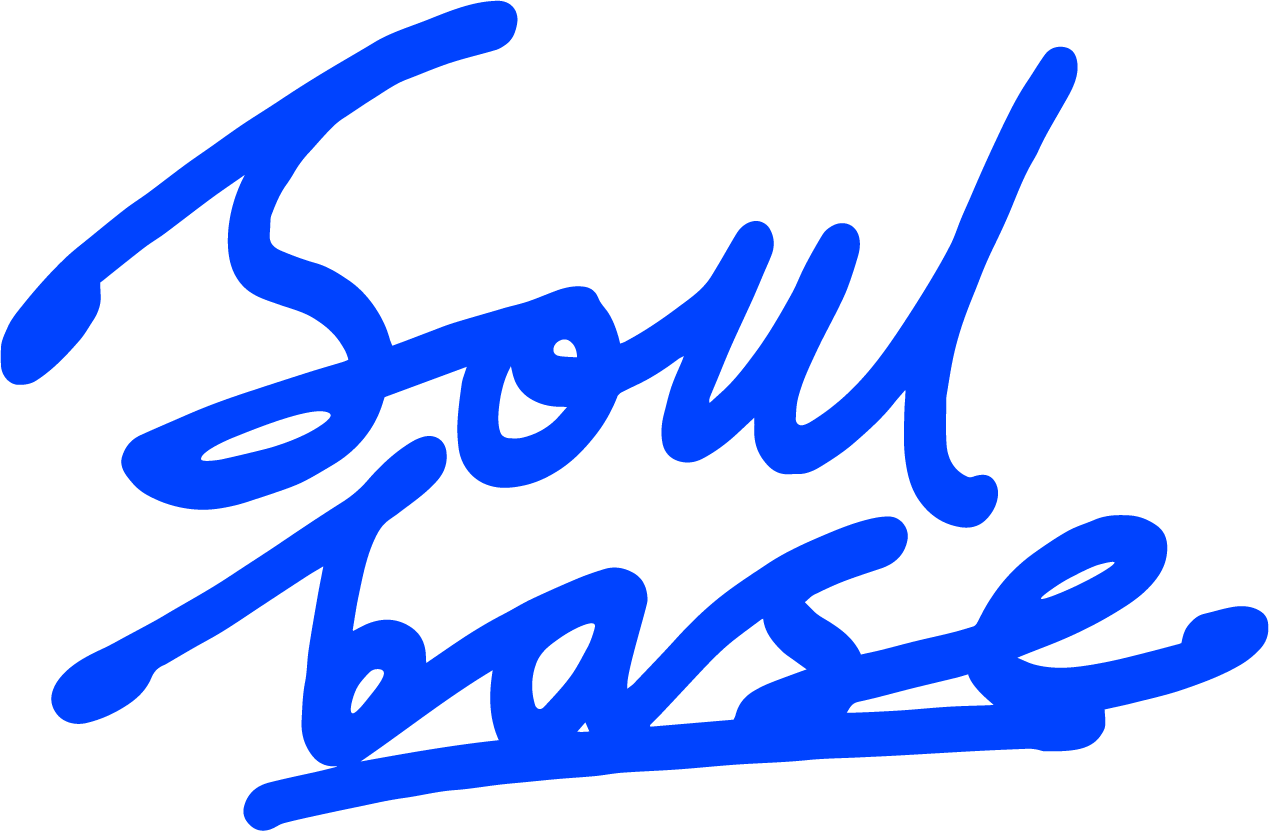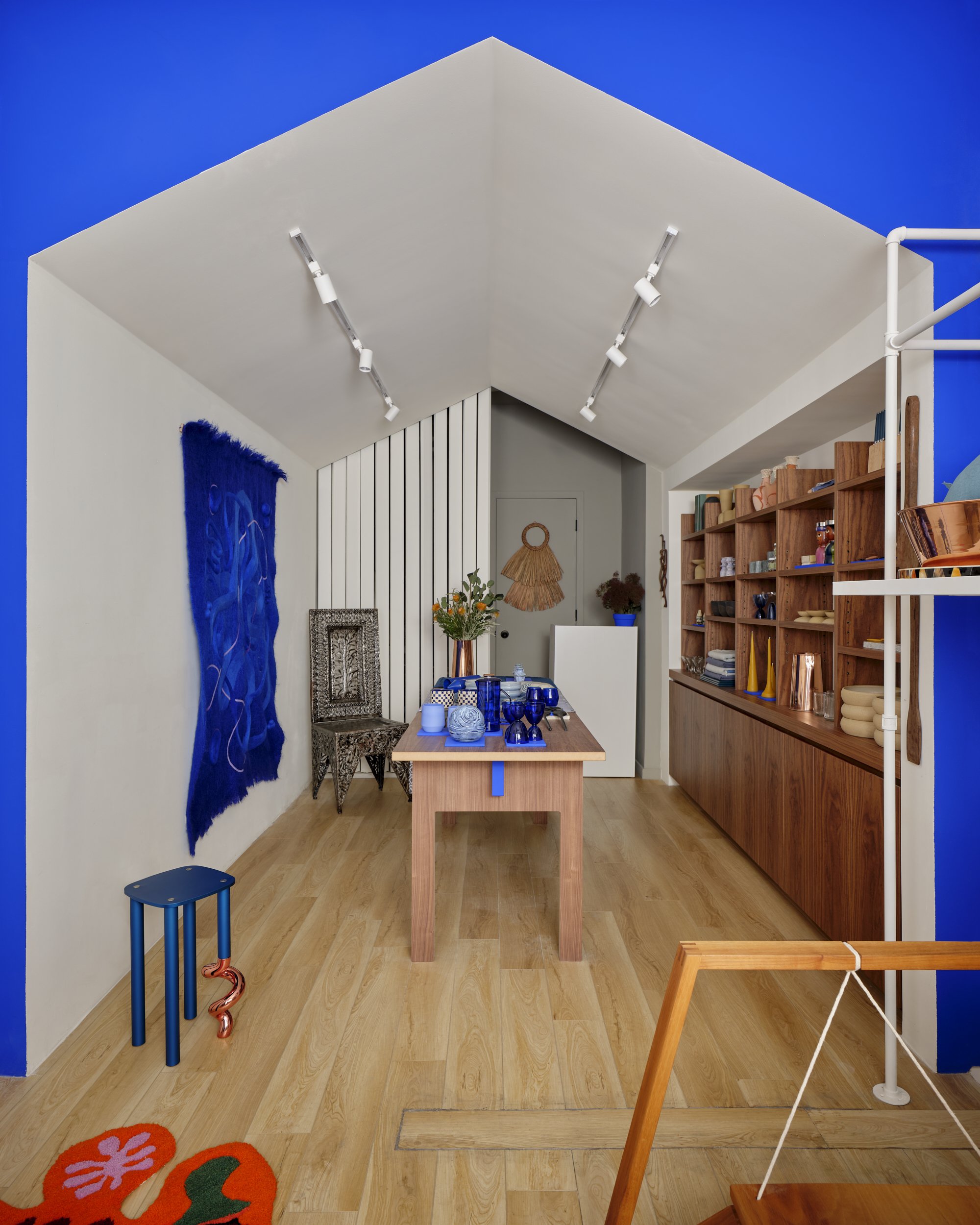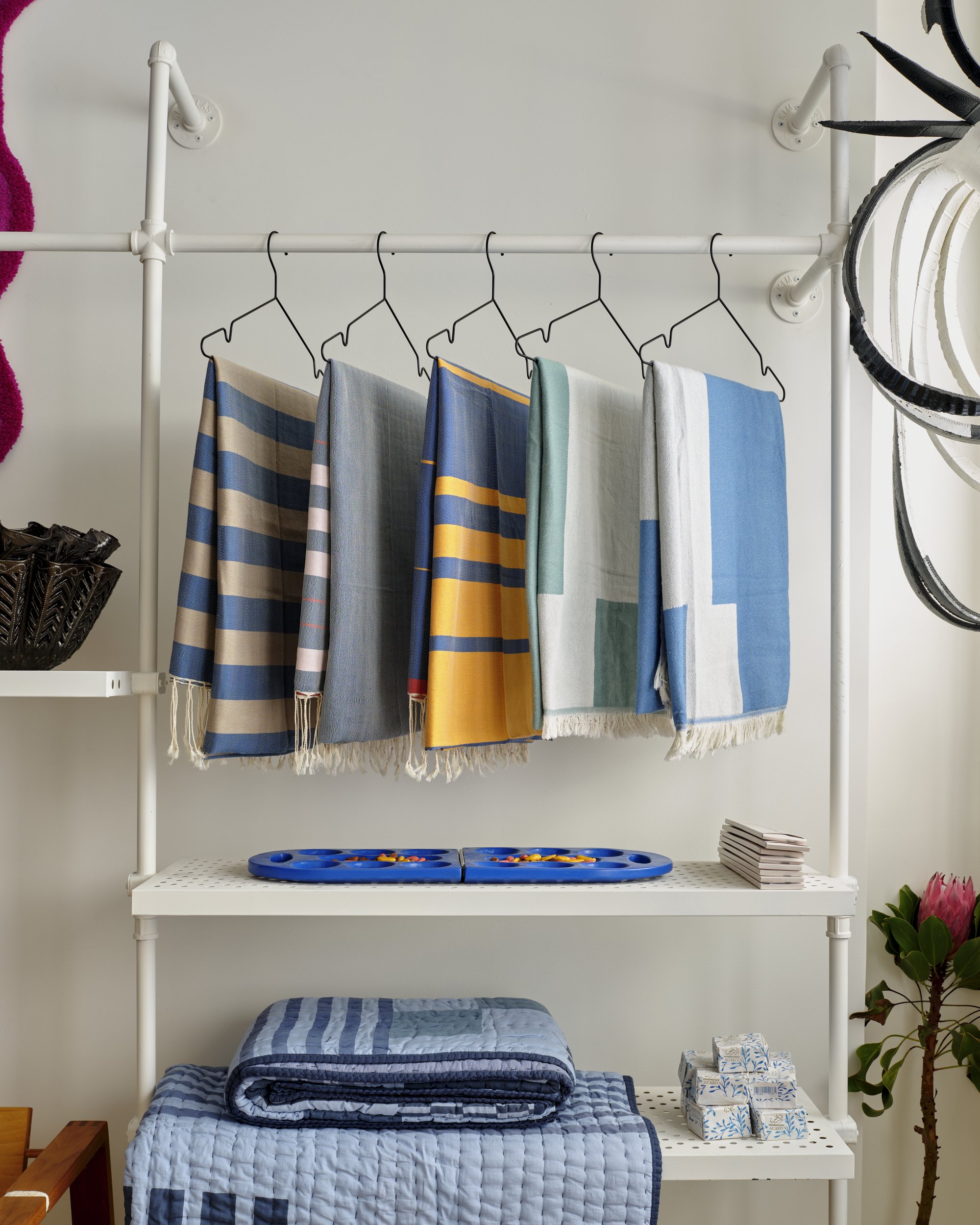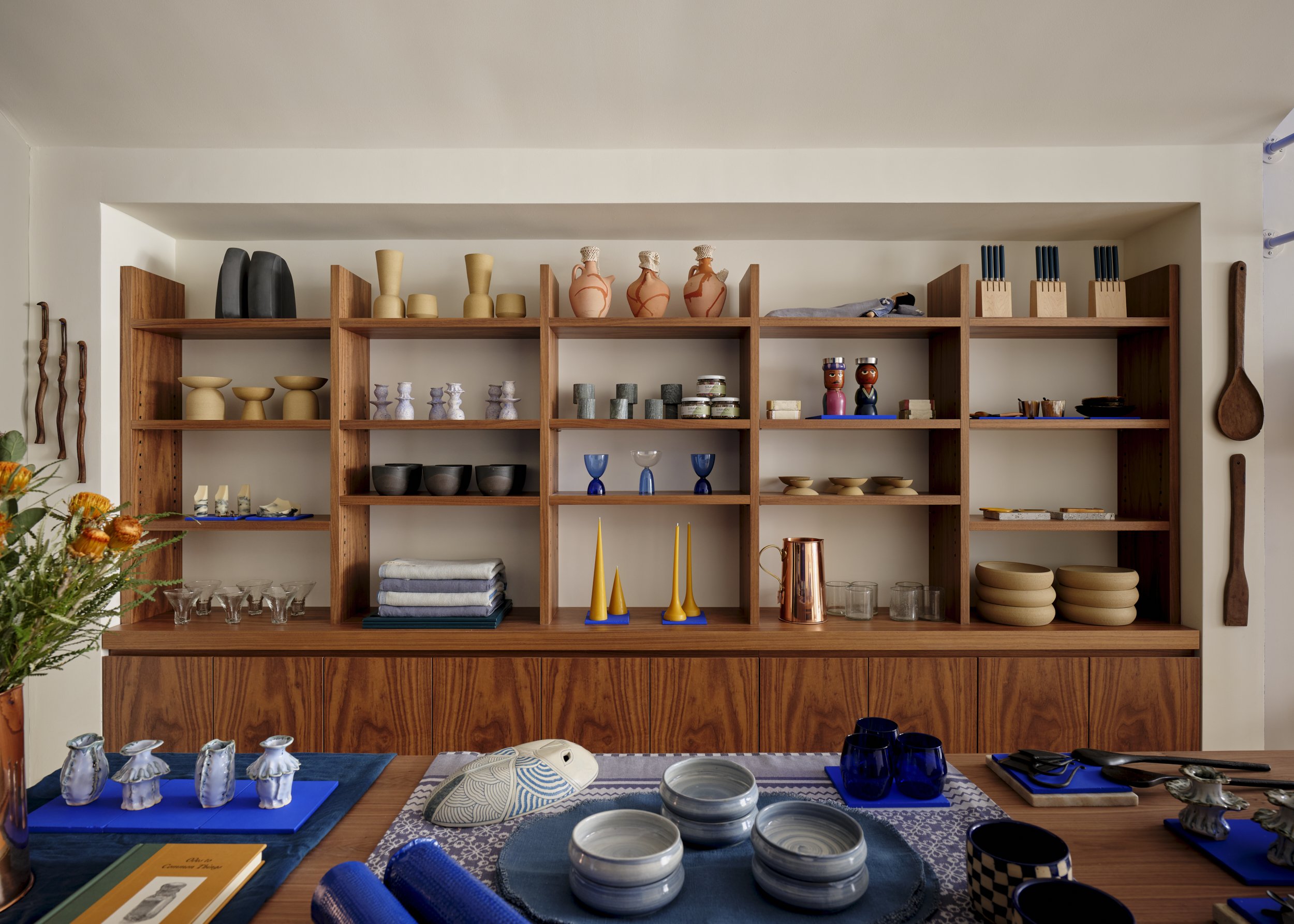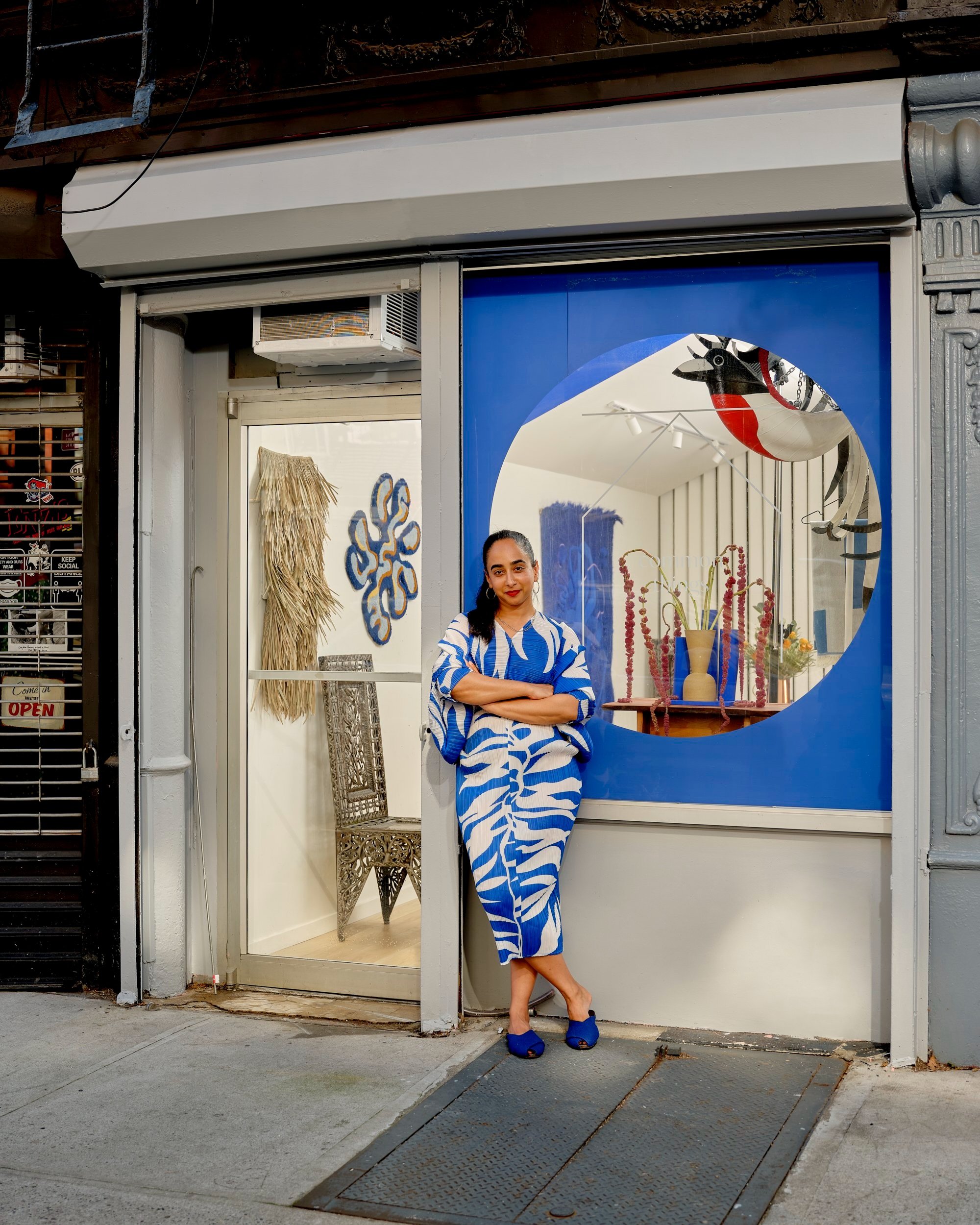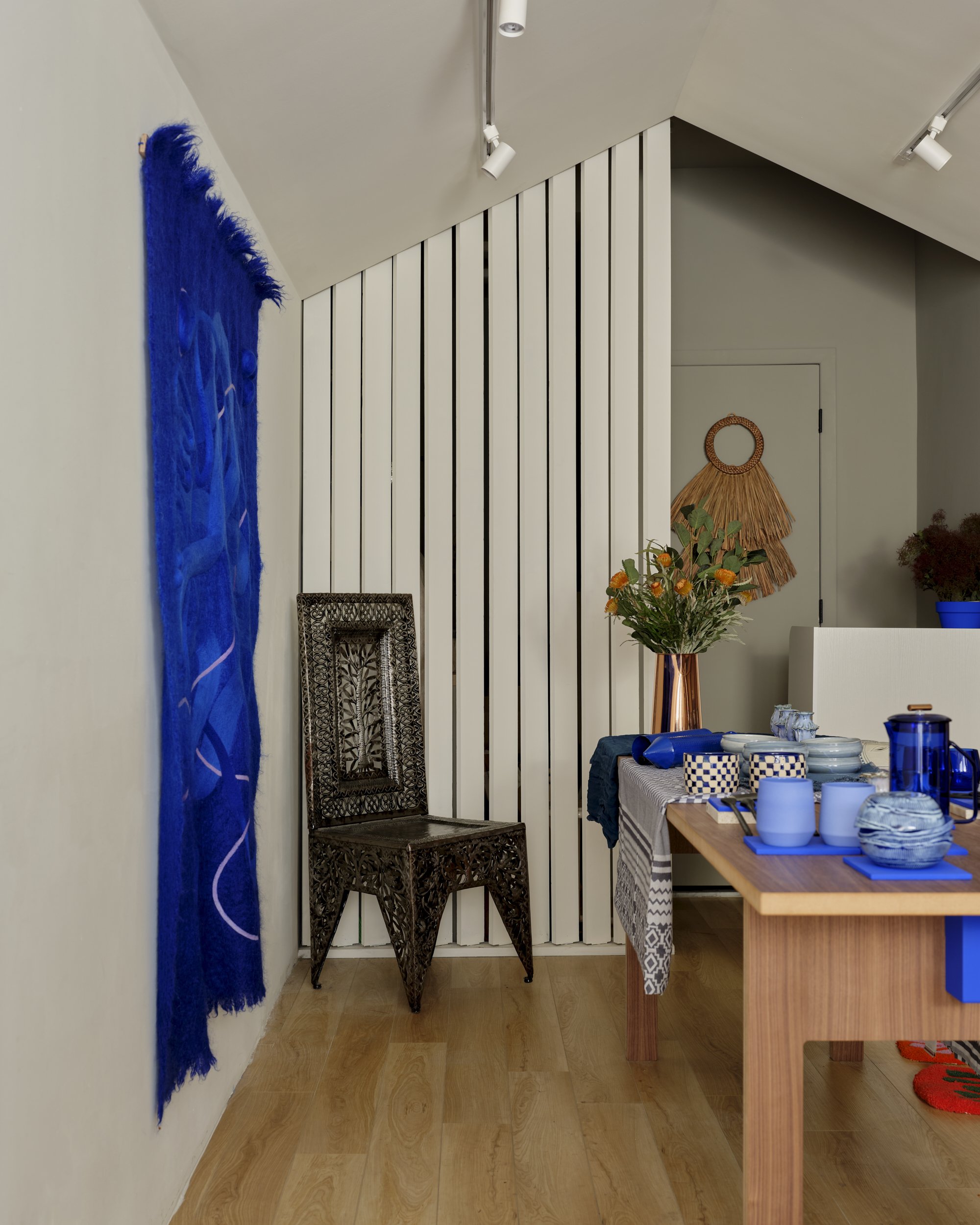SOULBASE Talk:
Common Things -Komal Kehar's Chromatic Lifestyle Shop in NYC
Step into Common Things with founder Komal Kehar, as she shares the inspiration behind this unique lifestyle shop, where each color and object inspires the visitor to see the world through a different lens. Nestled in the heart of New York City, Common Things offers a curated collection of everyday objects, each imbued with a story—of a maker, of a place, of adventure, of curiosity. The space is designed to connect people and invite shoppers into an eye-catching experience, from the bold blue color palette to artisan-produced goods from around the world. Discover how Common Things is redefining retail by celebrating the beauty of the ordinary and embracing the art of storytelling.
Text : Annika Bielig-Bussmann
Imagery by Sean Davidson
What is the main focus or ethos behind the selection of products in the lifestyle shop? What criteria are used to curate the products available? Is there a particular aesthetic or philosophy that guides the selection process?
The shop's namesake and ideology came from Pablo Neruda's book of poetry, "Odes to Common Things." In it, he elevates the ordinary and everyday aspects of life to emotional places of profound beauty and significance. Each poem celebrates the simple, often overlooked objects and moments in our lives, transforming them into notable treasures. This thinking invites readers to see the world through a different lens, one that values the mundane and familiar, revealing the richness that can be found in our day to day experiences. With every curation in the shop, we aim to echo that sentiment.
My personal experiences too—through interactions with friends and family as well as travels around the world—have deeply influenced the curation of products in the store. The ethos behind this selection is to create a permanent space that embodies the feeling of cultural discovery, akin to the experience of exploring new places or learning about different histories.
Can you share any collaborations or partnerships the shop has undertaken with local artisans, designers or brands? How do these collaborations enhance the shop's offerings and contribute to its sense of community?
I’m excited to host more craftspeople, artists and designers for meet-the-maker-style pop-ups this year. Our last one was with Ivana Brenner, the artist behind Domingo Ceramics here in New York. Produced by hand in small batches, all of her pieces have a porcelain makeup with gilded embellishments that recall a sense of regality from another time. Bringing people together to not only see and experience her work, but to chat and break bread with her—that’s what it’s all about.
In what ways does the shop cater to the diverse tastes and preferences of its clientele? Are there specific product categories or trends that are consistently popular among customers?
The objects that get the most love from our community are the ones they’ve never seen anywhere else: the Ugandan horn salt cellars, Thai backscratchers and bird-shaped planters made from old tires by a Haitian artisan named Gary Pierre-Charles. Anytime I can source something or hand-carry something home from a trip that will surprise and delight someone, I’ve done my job!
What inspired you to establish a lifestyle shop in New York City, and how does the shop's concept reflect your vision and values?
Common Things was born from a desire to bring people together through the beauty and interconnectedness of everyday objects. My hope is that this space can serve as a remedy to the isolation we all felt post-pandemic, offering a place where individuals can exchange perspectives and rediscover connections through shared experiences, affinities and curiosities.
I’m hyper-focused on offering objects that tell a story, either of their inception, function or maker. In a world where things are so mass-produced and big-box, this shop is a space for the art of individuality and craft.
Can you provide insights into the interior design concept of the shop? Who was the lead designer, and what elements were prioritized to create an inviting and immersive shopping experience?
As an architect and designer myself, I took on the design of the space. Design-wise, it's a really small space, so when you come in for the first time, it's a pretty intimate experience—sort of like entering someone's home.
Its layout is very mindful of scale and plays with the eye through a striking-yet-discreet gabled roof insertion painted in Yves Klein blue, a chromatic theme throughout the space and some of our objects. To balance the potency of the bold blue in the front of the space, the remaining walls were finished in a soft, clean white. This choice sets a serene and unobtrusive backdrop for the various products on display so that they can be the primary focus. For a cozy touch, I opted for walnut wood for the millwork and the center table fixture.
How was the shop’s color palette selected, and what emotions or atmosphere does it evoke for customers?
The color palette used throughout the shop is intentionally diverse and idiosyncratic. One near-constant thread in the shop's curation is the color blue, inspired by the unmistakable, pure pigment of Yves Klein. This choice of color evokes a sense of depth, calmness, and sophistication, creating an atmosphere that is both striking and harmonious. The selection of this color was made to create a cohesive visual identity while also adding a sense of uniqueness and artistry to the space.
How does the shop incorporate elements of storytelling into its retail experience, whether through product displays, signage or other creative means?
The Yves Klein blue frame in the front of the space and the many hues of blue found throughout the shop’s collection gesture curiosity and calm simultaneously. This is meant to feel a lot like the warmth of joy that hits you when you discover something new. The blue was also chosen because it is a universal color that cuts across any cultural differences when experiencing it in forms of nature— blue skies, water, etc.
What efforts do you make to foster a sense of belonging and connection among customers? Are there regular events, workshops or initiatives aimed at building community within the shop's space?
I’m really excited about Floriography, our first hands-on workshop series dedicated to the emotional meanings of flowers. At its root is a reminder from Rumi that “in the garden of life, flowers speak the language of the heart.” Guided by this sentiment, our first few workshops will generously be led by expert florist and multidisciplinary designer, Ron Hansford. We also plan to host many more meet-the-maker-style pop-ups with some of our favorite craftspeople, artists and designers in the coming months.
Finally, how do you differentiate your shop from other retail concepts in New York City, and what unique qualities or offerings set it apart in the competitive market?
Ultimately, this shop is about connection for me; it's meant to be a place where like-minded people can come together, relating through shared rituals and creature comforts. So far, I'm most proud of the growing community of people who have taken part in what we're doing and continue to participate in bringing it all to life. I’m incredibly proud to say that we offer many objects that can only be discovered in our shop.
